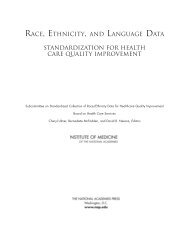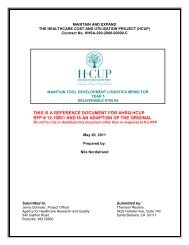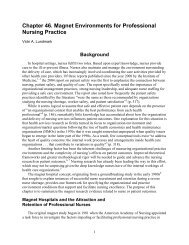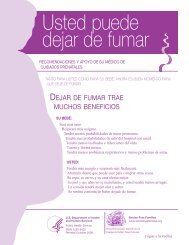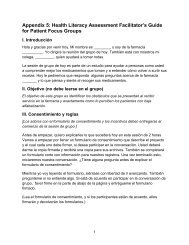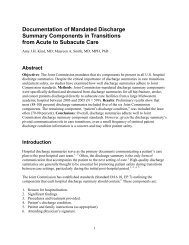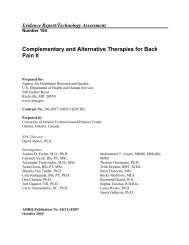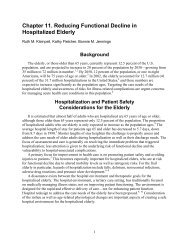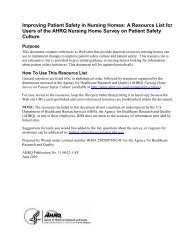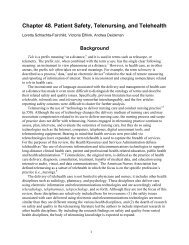Improving Patient Flow and Reducing Emergency Department ...
Improving Patient Flow and Reducing Emergency Department ...
Improving Patient Flow and Reducing Emergency Department ...
You also want an ePaper? Increase the reach of your titles
YUMPU automatically turns print PDFs into web optimized ePapers that Google loves.
Staff reported that the measures were initially difficult to collect, but the learning curve quickly<br />
flattened. The need to access multiple IT systems was the challenge most frequently identified. Staff did<br />
not anticipate a need to hire additional staff when the measures became permanent, nor was additional<br />
training required to abstract the measures. One staff member needed “a 5-minute phone call” to learn<br />
how to access the nursing documentation system. Staff overwhelmingly voiced support for the measures.<br />
An ED medical director said the throughput measures were like “barometers” because they gave a<br />
global view of ED performance, while other, narrower measures, such as Door to Doctor, were<br />
“yardsticks” yielding more specific information.<br />
An ED nurse recalled how his facility chose the throughput target of 150 minutes for discharged<br />
patients: “We saw that our patients are grumpy after 150 minutes…that’s how we picked the 150<br />
minutes….But that’s not really the best way to pick.” Several staff reported that having <strong>and</strong> sharing the<br />
data gave them “greater legitimacy” when dealing with other departments <strong>and</strong> helped create a “culture<br />
of continuous quality improvement within the ED.” Most importantly, staff used this information to<br />
support their position that ED crowding requires hospital-wide solutions <strong>and</strong> that it is not just an ED<br />
problem.<br />
13



